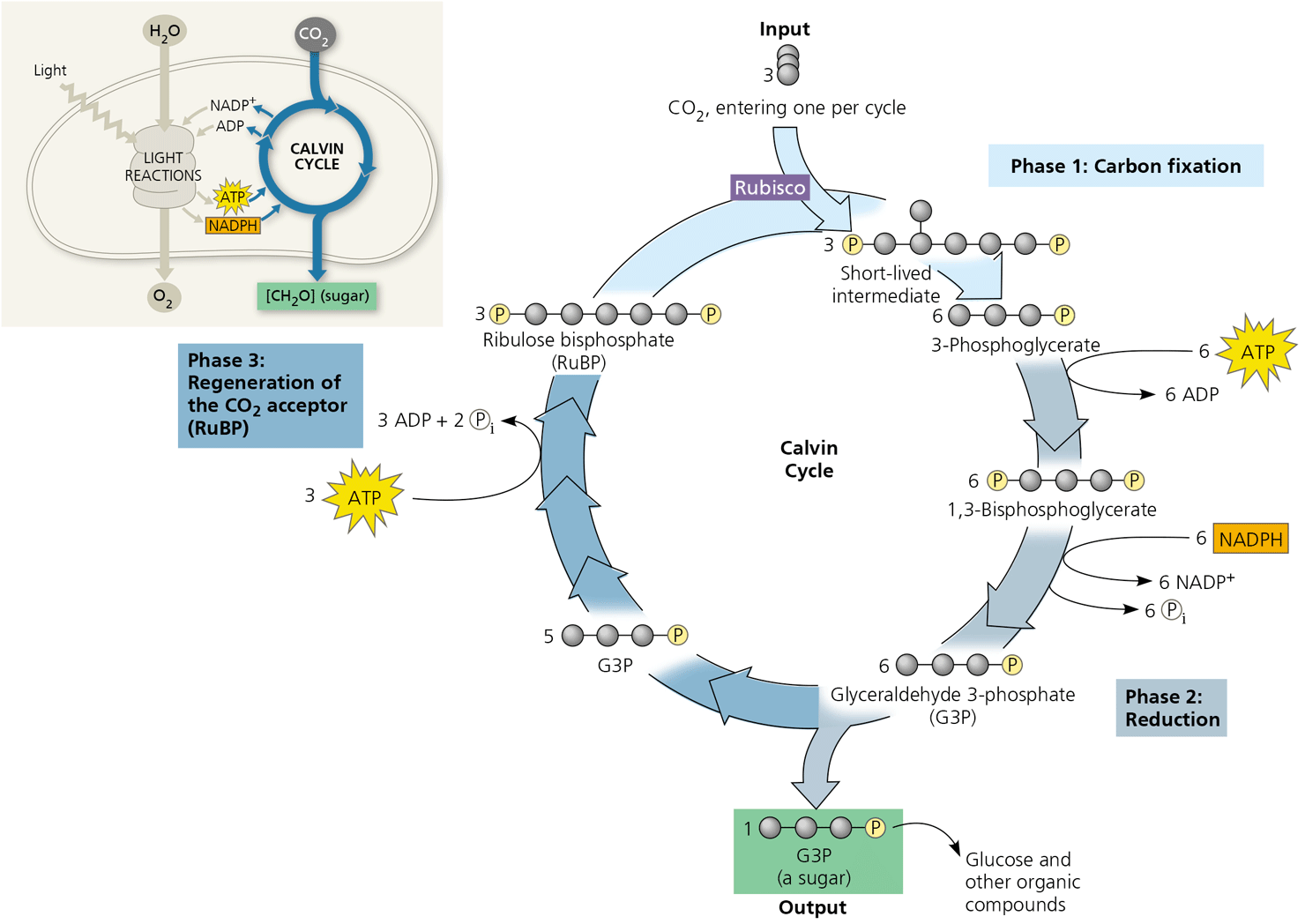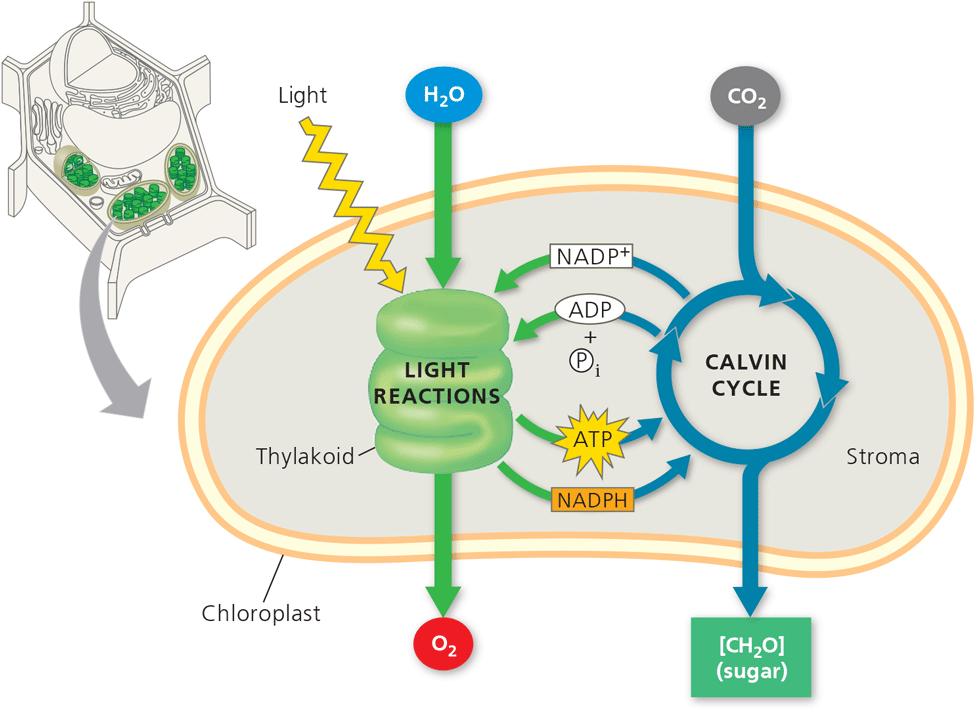
The overall photosynthesis equation is:

Photosynthesis consists of two big “phases”: the light reactions and the calvin cycle.
Light Reactions
The light reactions convert solar energy to chemical energy with the help of pigments in chlorophyll. The pigments have an affinity for different colors of light and since green cannot be absorbed very well, we see leaves as green (the pigments reflect green light).
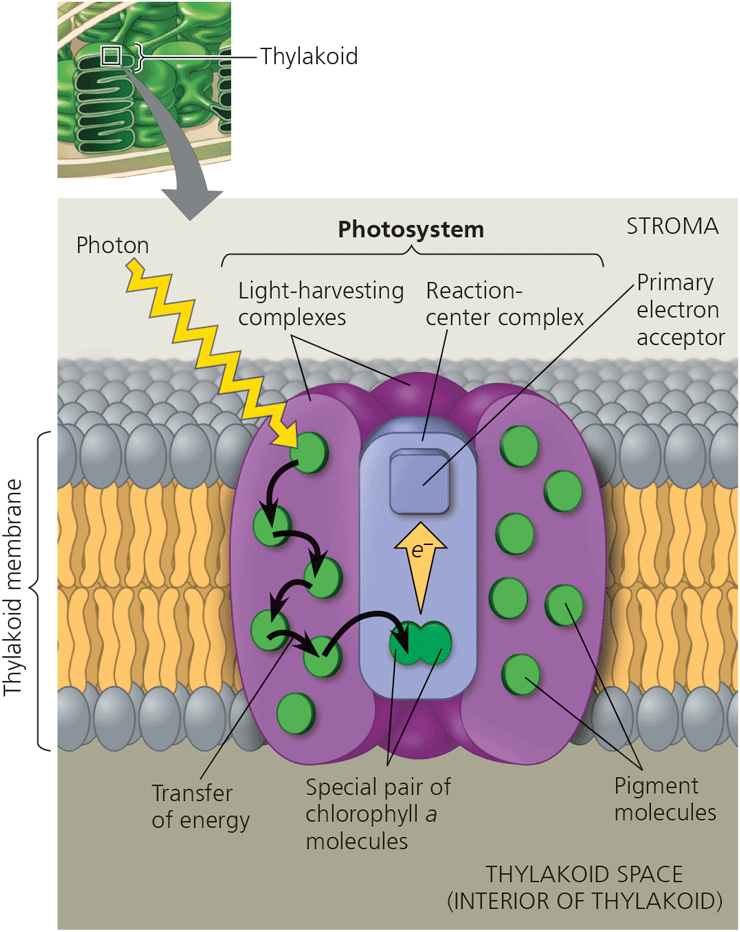
Chloroplasts consist of many small complexes called photosystems. Photosystems are composed of a reaction-center complex and multiple light-harvesting complexes. The pigment molecules in the light-harvesting complexes absorb energy from photons of light and pass the energy to an important pigment called chlorophyll a in the reaction-center complex. Electrons in chlorophyll a become excited because they absorb the energy.
There are two types of photosystems in the thylakoid membrane: photosystem II (P680) and photosystem I (P700).
First, photosystem II absorbs light and excites its electrons (they were obtained from the splitting of water). Once the electrons are excited, they travel down an electron transport chain and release ATP in the process. The electrons then move to chlorophyll a molecules in photosystem I and get excited again. But this time, NADP+ absorbs them to form NADPH.
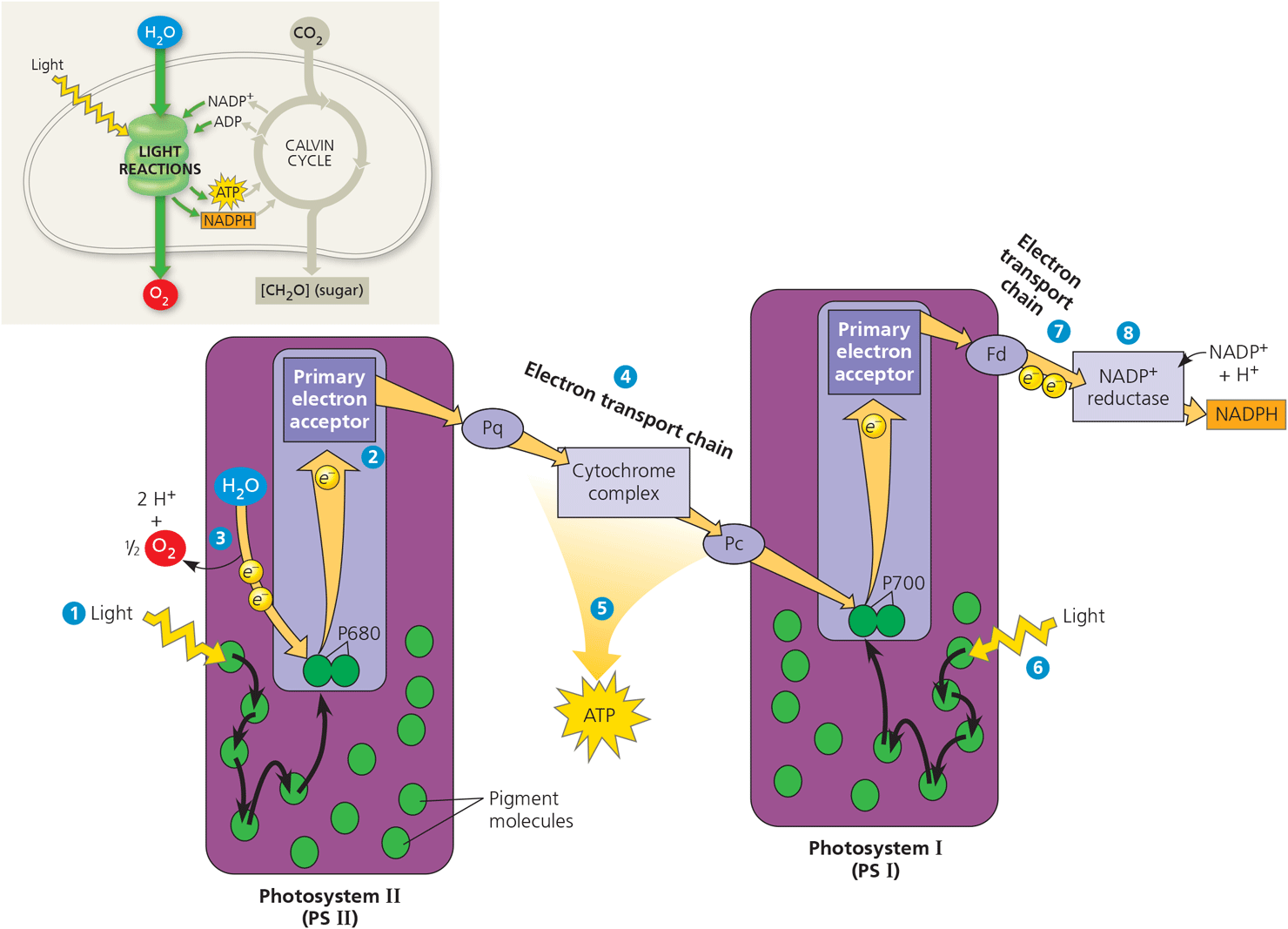
When the water was initially split to release electrons, the H+ remained in the thylakoid space. The accumulation of these hydrogen ions are used in chemiosmosis. They pass through the ATP synthase on the thylakoid membrane and generate ATP. This ATP is used in the next step of the process, the Calvin Cycle.
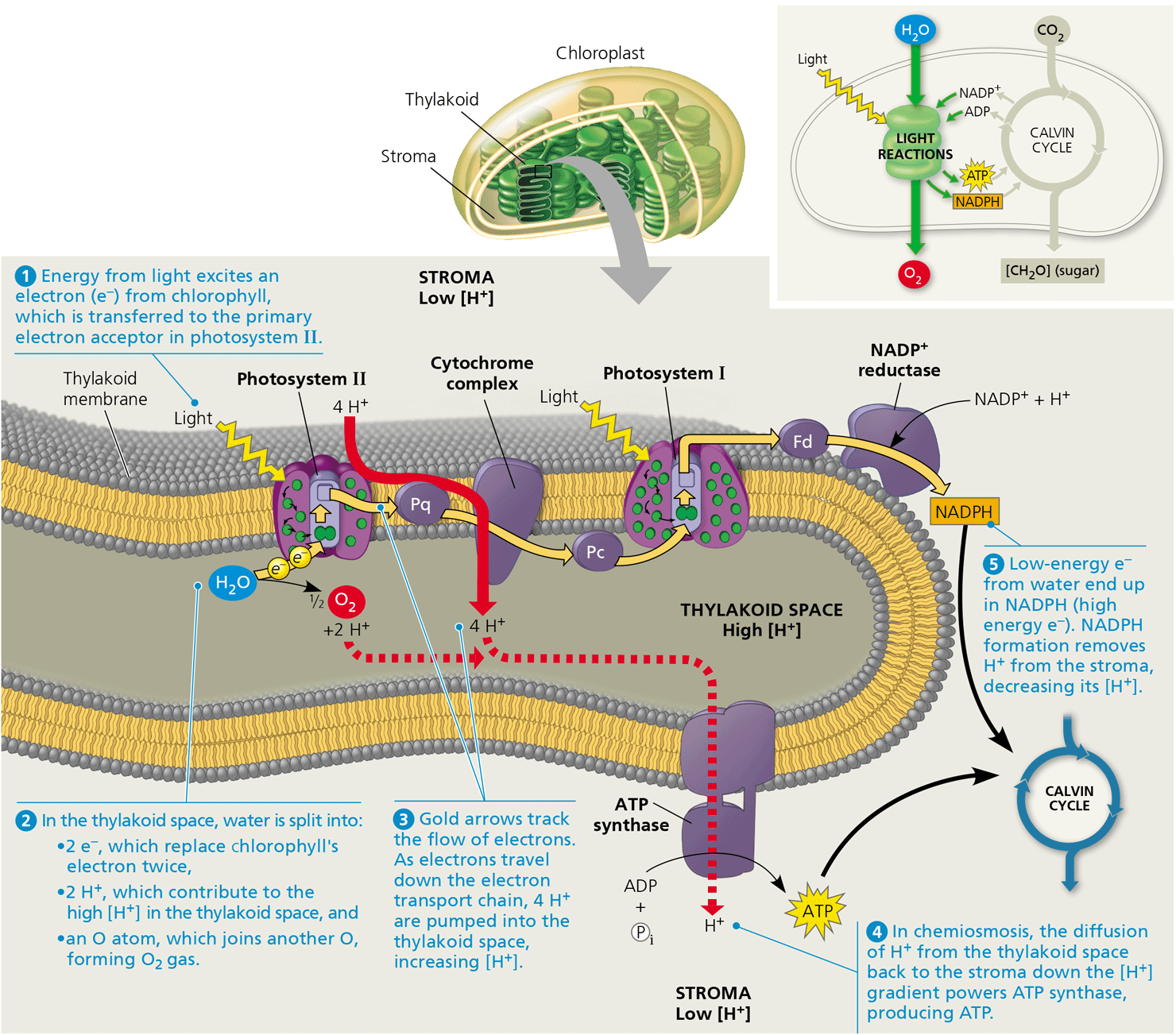
Calvin Cycle
The calvin cycle doesn’t need much explaining. The diagram displays it all!
